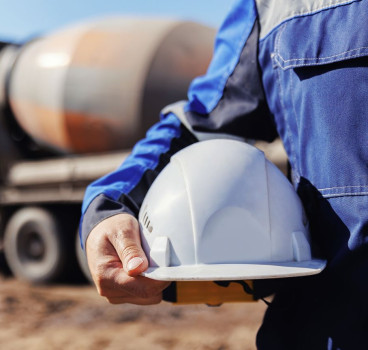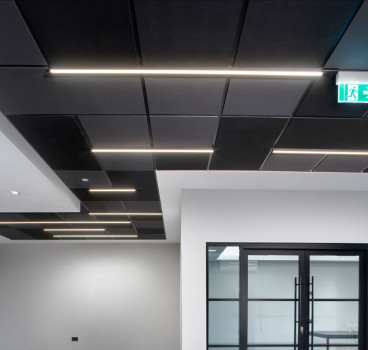The Future-Proofing Trends Shaping Residential Construction
Residential construction is experiencing rapid evolution, driven by emerging technologies, shifting lifestyles, and heightened awareness of environmental sustainability. And for today’s construction professionals, keeping pace with these developments isn't only advisable - it's an essential requirement. To add comfort and functionality while preserving value and appeal, modern homes need to both meet current demands and anticipate likely future trends.
In this article, we explore the critical areas that are reshaping modern residential construction, highlighting the need to adapt homes for sustainability, comfort, and long-lasting relevance.
Sustainable Building Practices
Environmental sustainability is no longer a niche concern; it has become a vital cornerstone of contemporary residential construction. Eco-friendly practices are increasingly preferred by homeowners, as well as being mandated by evolving regulations. This shift means modern builders must leverage energy-efficient materials and innovative technologies, all designed to minimise environmental footprints while maximising energy performance.
Notably, energy-efficient windows, advanced insulation, and even integrated solar energy systems have become standard rather than exceptional. Energy-efficient windows significantly reduce heat loss, lowering heating costs and improving household comfort. Enhanced insulation means homes can maintain stable internal temperatures, substantially cutting energy consumption. And while solar energy integration is still a growing market, it can contribute not only to lower electricity bills, but also a reduced reliance on non-renewable energy sources - improving overall property value.
Adapting to Remote and Hybrid Work
The widespread adoption of remote and hybrid working models in recent years has transformed the expectations many of us have for residential spaces. Increasingly, properties must incorporate designated office spaces or multifunctional rooms that can cater to evolving professional needs. This trend shows no real signs of slowing down, making adaptable home layouts an integral aspect of modern residential design.
Creating versatile spaces within existing homes often involves thoughtful planning, rather than extensive structural changes. Considerations might include sound insulation, dedicated electrical wiring for technological equipment, and modular furniture that can easily transform room functions. Clever storage solutions, like built-in desks or cabinetry, also allow for quick conversions from living spaces to working environments, maximising utility without significant spatial reconfiguration.
Maximising Existing Space
Given the constraints of urban development and rising property costs, homeowners and builders alike are frequently turning to innovative ways to optimise existing spaces. Rather than expansive ground-floor extensions, which can be expensive and time-consuming, smart solutions that repurpose and enhance existing areas are gaining prominence.
For example, many homeowners in urban areas are opting for clever loft conversions, utilising specialist firms to transform unused attics into practical living spaces. Such conversions effectively maximise a property’s footprint without infringing on outdoor space. And with the strategic use of partition walls, multifunctional furniture, and integrated storage solutions, homeowners can achieve even deeper optimisation of these limited spaces.
Innovations in Smart Home Technology
Smart home technology continues to revolutionise residential construction, with innovations rapidly transitioning from optional extras to essential features that are expected by today’s homeowner. Builders and developers who take steps to embrace these technologies can attractively position their projects in a competitive market.
Current advancements include integrated home automation systems, smart energy management tools, advanced security systems, and intelligent appliances capable of adapting to homeowner preferences. Aside from enhanced convenience, automated lighting, heating, and ventilation systems are also capable of delivering considerable energy savings. Likewise, security technologies - such as smart locks, surveillance cameras, and remote monitoring systems - provide peace of mind alongside practical security enhancements. These integrations can have a real impact on property value, along with improving overall homeowner satisfaction, underscoring the important role they play in future-proof residential design.
Health and Well-being Design Considerations
Increased awareness of the intrinsic link between building design and occupant health and well-being is prompting significant changes in residential construction. With recognition that mental and physical health can be profoundly influenced by living environments, homes are increasingly being designed with wellness principles at their core.
Key wellness-focused design elements include improved ventilation systems that enhance air quality, ample natural lighting to improve mood and circadian rhythms, and effective soundproofing to create peaceful living environments. The integration of biophilic design principles - incorporating natural elements such as greenery and water features - is also gaining popularity, further improving the sensory experience within homes. Collectively, these design strategies can elevate the living experience, providing environments that support healthier, happier lifestyles.
Building Homes for Tomorrow
Residential construction is undergoing a profound transformation, fuelled by sustainability imperatives, evolving work practices, spatial constraints, technological innovations, and heightened awareness of health and wellness. For homeowners and construction professionals, embracing these forward-thinking trends can have an immediate impact on comfort or value, while also preparing homes for a dynamic future. And by adopting these principles, residential property development can become resilient, adaptable, and desirable, ensuring sustained relevance and lasting value in an ever-evolving housing market.
Additional Blogs

Why good contractors are walking away from bad projects
There is a growing change happening across the construction industry, one that many clients still have not fully recognised. Highly competent, reputable contractors are increasingly walking away from...
Read moreWhen fire breaks out who really knows the system
The story that caught my attention recently wasn’t about fire growth or building loss, it was about confusion. Specifically, the confusion faced by the fire service when arriving at buildings...
Read more

The design and development of Nexus Layouts
When Zentia set out to rethink the suspended ceiling, the brief was clear: deliver greater creative freedom for designers, more distinctive visual identity for clients, and a solution that could keep...
Read more